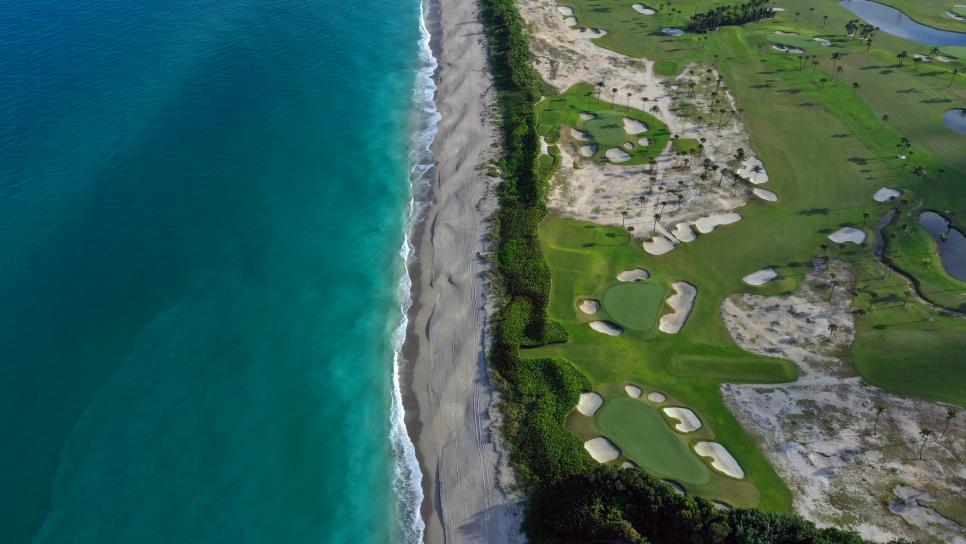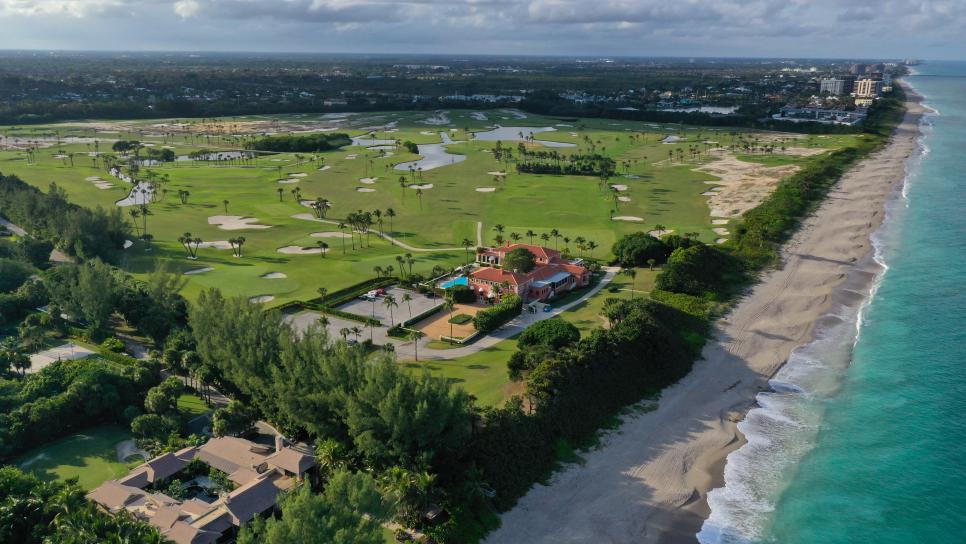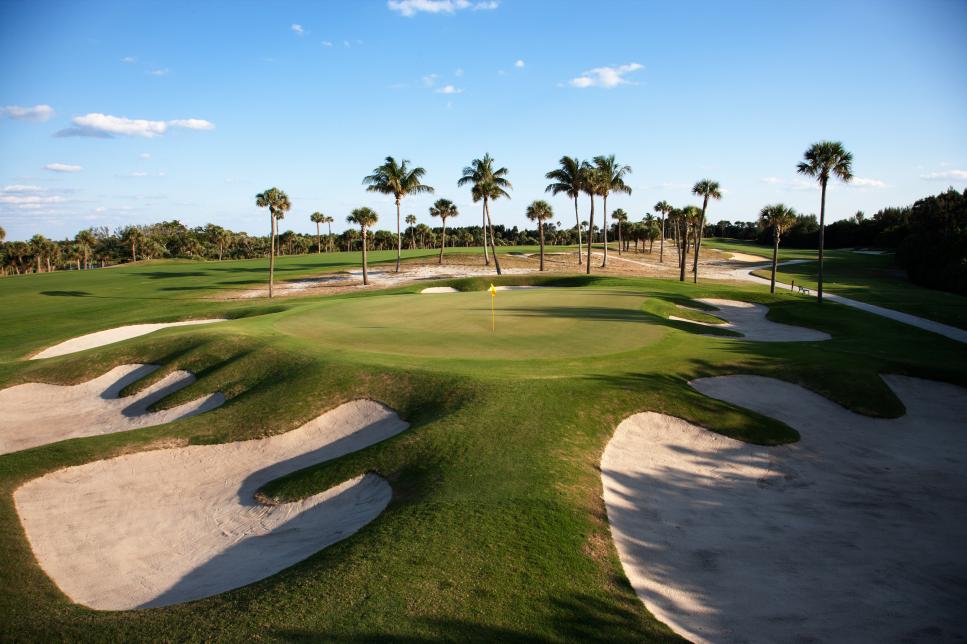News
Seminole Golf Club, one of golf's most exclusive enclaves, is ready for its TV debut

It might sound strange to describe a golf club with a crushed-rock parking lot as majestic, but Seminole Golf Club is that and more. Located hard against the Atlantic in Juno Beach, Fla., north of West Palm Beach, Seminole may well be the finest layout the legendary architect Donald Ross ever conceived. Currently ranked No. 12 on Golf Digest’s list of America’s 100 Greatest Golf Courses, it’s one of only a handful of courses that has made every published list since the rankings began in 1966. And it has never been out of the top 20.
Architecture experts marvel at Seminole’s compact yet complete routing. On a trapezoid of land of just 140 acres, Ross positioned his 18 so that golfers must contend with wind from a slightly different direction on nearly every shot. His remarkable layout lies on three levels. Closest to the seacoast is a lateral sand dune parallel to the beach, on which two greens (the 13th and 18th, the latter later added by Dick Wilson) and three tee complexes now rest. Inland is a wide, low basin, just a few feet above sea level, previously swampland that Ross’ crew drained and graded into eight holes now edged by palms, bunkers and lakes. On the far west edge of the site is a wide sand ridge some 40 feet higher than the basin. It contains three complete holes and the tees and greens for seven others. Its topography is reminiscent of Scotland’s Royal Dornoch, where Ross was born, raised and first took up the game.

Carlos Amoedo
Competitive players have long admired the subtle challenges of Seminole. Most fairways are comfortably wide, but deceptively so, because on windy days and when turf is firm and fast, drives can trundle off a fairway and into one of the more than 70 fairway bunkers or, on some holes, into a sandscape rough recently enhanced by the design team of Bill Coore and Ben Crenshaw. The true test lies in shots onto the greens, putting surfaces that range from long and skinny to wide and shallow. Unless hole locations are toward the center, flag-hunting is risky, as the perimeters of most greens slope gently toward deep bunkers that frame most greens and encircle several. Once on the greens, most contours are imperceptible at first look and make for deceptive putts. Some of today's finest players, Rory McIlroy, Dustin Johnson, Rickie Fowler and Matthew Wolff will take on these challenging elements during the recently announced TaylorMade Driving Relief Skins Game, to take place at Seminole on May 17, 2-6 p.m. on NBC.
While Ross had the reputation of mailing in many of his blueprints to be built by others, there are newspaper clippings that document his presence on site supervising construction of Seminole, which was built in seven months and opened Jan. 1, 1930. Ironically, whatever attention to detail Ross gave to greens and bunkers have been lost, as a regrassing effort some 50-plus years ago showed little regard to his original rolling contours. Even before that, the bunkers had been reshaped and rebuilt by Wilson in 1957 (not 1947 as repeatedly misreported in the past by this writer). There is no desire to reclaim the original Ross greens because members like what’s there now, but in recent years, Bill Coore and Ben Crenshaw have restored the look and purpose of many original bunkers.

Stephen Szurlej
.jpeg.rend.hgtvcom.966.644.suffix/1573227586228.jpeg)
Jon Cavalier
Any number of Seminole’s holes are classics of the craft. Crenshaw’s favorites are the sixth and 15th (above). No. 6 is a straightaway 390-yard par 4 that plays like a dogleg because of a diagonal string of bunkers that eat into the line of play from the right. The 15th is the second of back-to-back par 5s (a rarity for Ross) and features alternate fairways (also a rarity), a gambling right-hand route along a water hazard separated by bunkers and palms from the longer, safer left-hand one.
An equal share of Seminole’s majesty is provided by its timeless clubhouse, a pink stucco structure of Spanish American flavor built in 1929, with its original lockers of California knotty pine still in use. Positioned in the southeast corner of the property adjacent to the coastal dunes, it has no window to the sea. The story goes, when asked why, Ross replied, “This is a golf club, not a beach club.” As Ross had nothing whatsoever to do with the design or construction of the clubhouse, the tale is likely apocryphal.

Although it hosts a top-level amateur competition each year (the Coleman Invitational), Seminole has never before hosted a professional event witnessed by hundreds of thousands of television viewers, so most golfers around the world have known Seminole only by its reputation. How it will stand up to the rigors of the power game that dominates professional golf today is a great unknown. The four combatants in the TaylorMade Driving Relief Skins Game are capable of reducing Seminole’s par 4s and 5s into a succession of short-iron approach shots, but if the wind blows, that’s doubtful, and if the pins are tucked, the targets will become much smaller, even if approached with short irons.
In a way, the Skins Game will serve as a prelude to next year’s Walker Cup Matches, which are scheduled to be held at Seminole in early May. That event is expected to be open to spectators. For now, we'll cherish this moment to admire Ross' masterpiece, all for a good cause.

